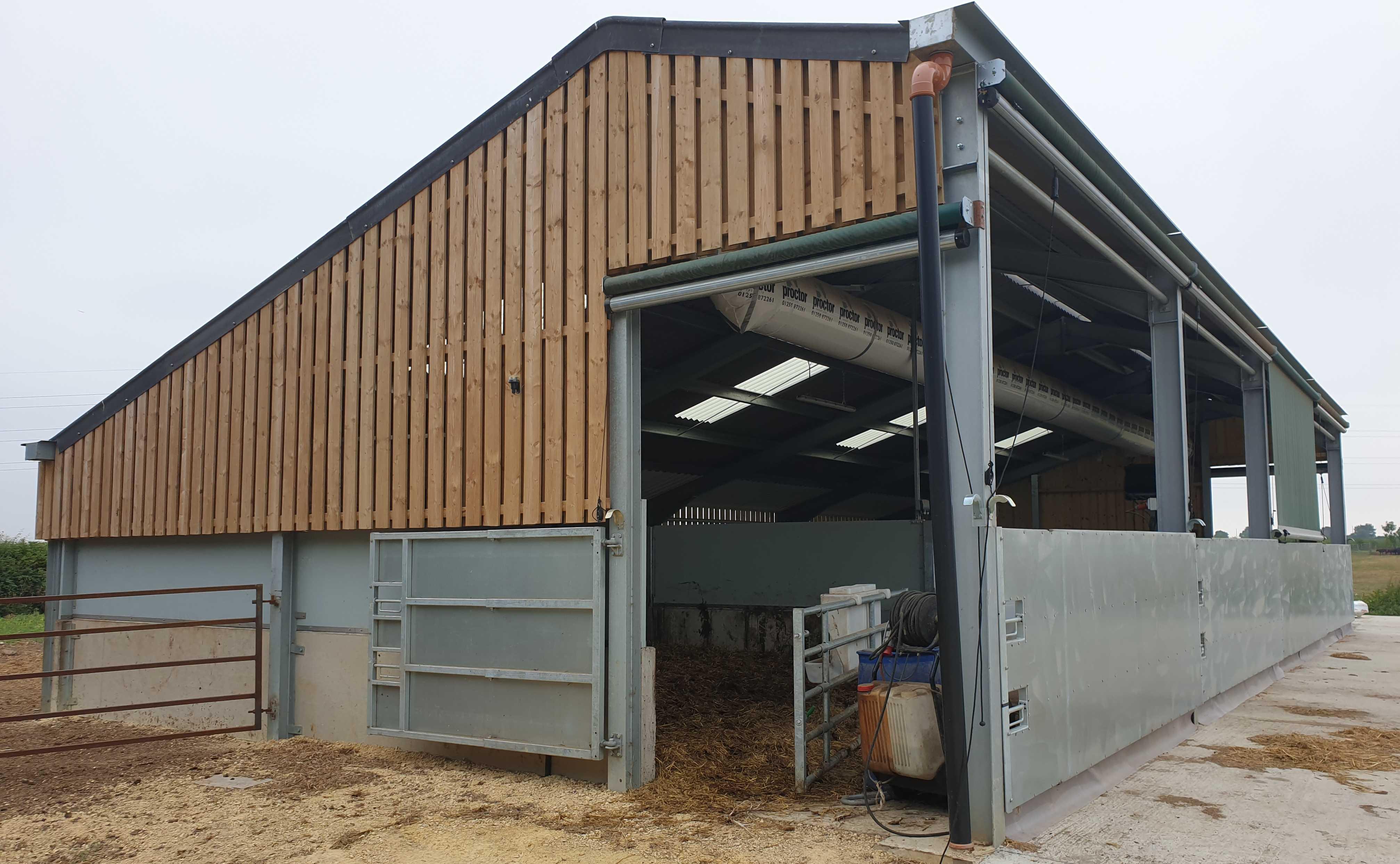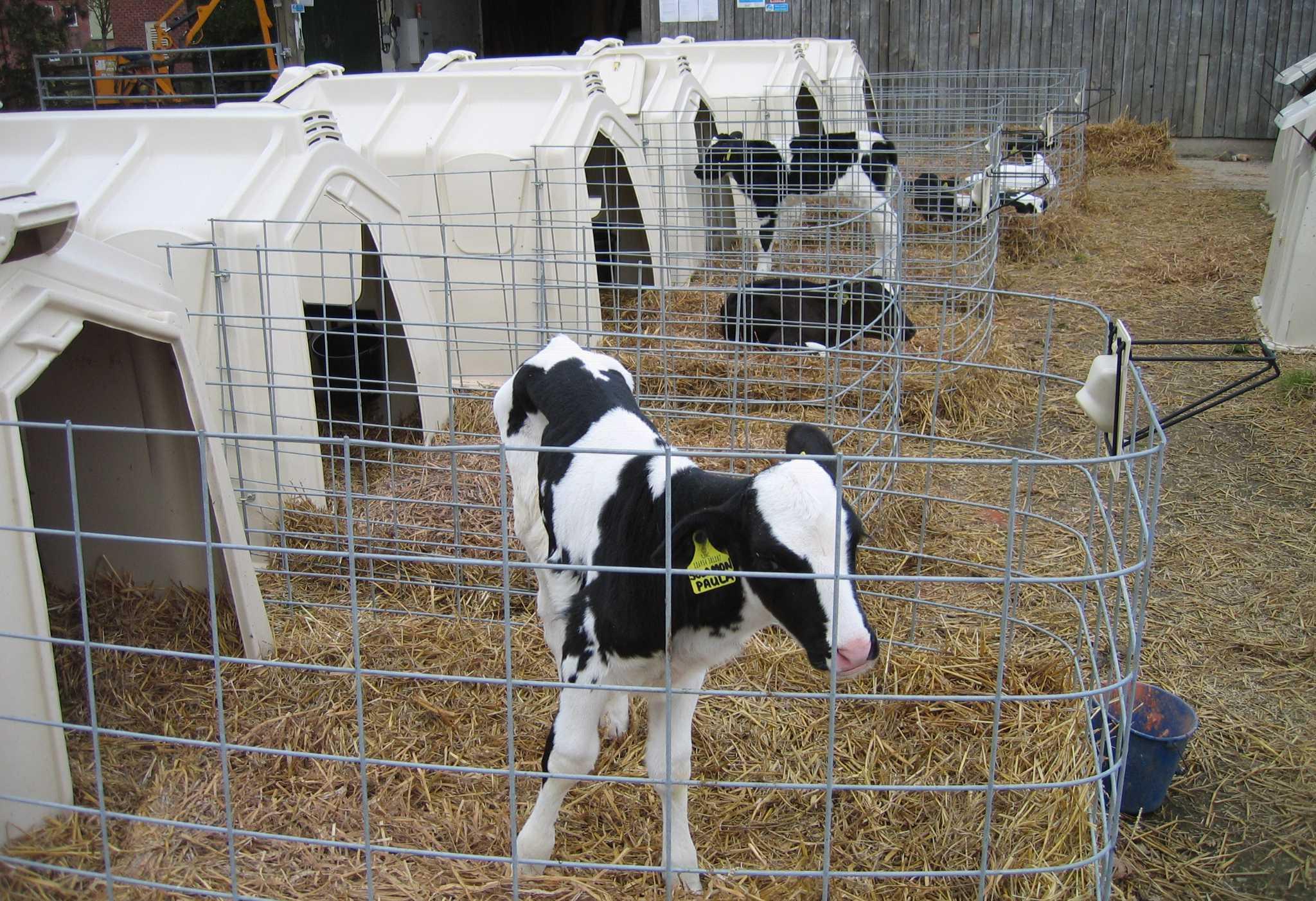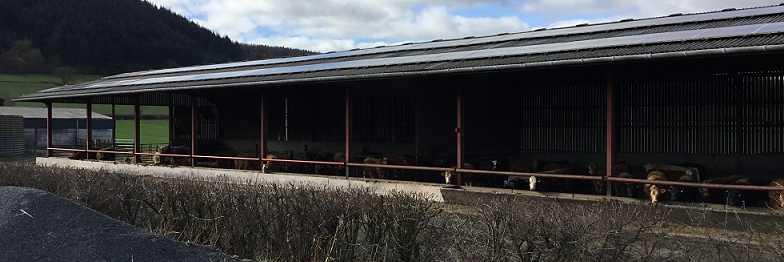
11 minute read
Buildings
Good design should allow resources applied after a building has been constructed to be safe for the inhabitants, safe for the user, safe for maintenance tasks and have a sustainable impact on the environment. The owner and the investor, will require the design to provide profitability for the business and to mitigate any factors that might produce a negative response from the authorities. If we take the factors listed above and apply them to the health and welfare of livestock, there is much to consider. Some items are relatively easy to apply, such as rules on stocking density, a requirement to keep stock in discrete groups but without causing injury, and therefore solid pen divisions and gates
and components that last over time. For young cattle there is a requirement to allow stock to see each other but ideally have no nose-to-nose contact. Floors should inspire confidence of movement but not be so harsh that they create foot problems and become an additional factor in the average £330 loss per cow case from foot issues. In previous articles I have written about specific issues related to some building designs that make it intrinsically difficult to maintain suitable levels of hygiene for maintenance of good health, namely appropriate hygiene. The poultry industry, and to a significant level in the pig industry, have embraced the requirement for good building hygiene by adopting systems that balance building and room design along with group sizes that allow all-in, all-out (AIAO) management. Animals of the same or similar ages enter a clean pen, grow to a size that hits maximum permissible stocking densities (kg/m2), and then over a few days or weeks, the pen is emptied for enough time to allow effective cleaning. Once the pen or building is dry, the process can start again. The design works to support good health. However, many aspects of cattle systems have not yet reached this level. Losses in cattle systems can be high, and variable costs rise, labour efficiencies decrease, and the working environment can become stressful. Research from 1990 indicated that when pneumonia is present in young cattle, the increase in labour to manage each case of pneumonia contributed to 14% of the financial losses. The negative cost to stock people is indicated by the fact that ill health in stock is top of the list of factors that people dislike about their work with livestock. Health can be supported with vaccination and medication, but the environment has a major role to play. As mentioned previously, the increase in size of cattle buildings can lead to a natural increase in risk from spreading disease pathogens. Large buildings and pens may be provided at a reduced cost per m/2 at the construction stage compared with smaller units, but over the lifetime of the building it may become less efficient. The challenge is to persuade the farmer producer that sometimes small is better, and will provide a better and more sustainable financial return. There is an absolute requirement for competent buildings for young cattle in the UK, and around the world. The mortality rate of dairy calves and replacement heifers from day 3 to 60 (i.e. from 3 days old to 60 days old), 61 to 365, and 366 to first calving was 5.5%, 7.4%, and 8.7%. The data is from China’s dairy industry, but the UK has been there too. That is a 20% loss in the youngstock population before they have the opportunity to produce a calf and milk, and start to repay more than two years of investment costs. Figure 1 shows losses of calves in the Netherlands, home to a very advanced agricultural industry, amounting to a steady 10% per annum. Recent data from the UK show that 25% of all mortality on cattle units takes place in the first 3 months, with 6% mortality in female dairy calves. Mortality data is the tip of the iceberg, because animals that are affected but survive (morbidity) result in a massive financial loss to the industry. The final statement from the UK research group involved in the study, “Environmental conditions play a significant role in calf mortality rates and further research is needed to explore how to optimize conditions to reduce calf mortality rates in GB.” Whilst the researchers gather the money and do the research, I am pointing directly at the building sector and saying there is a significant gap in the market here. The youngstock sector in northern Europe and America/Canada has made considerable use of calf hutches (Fig 2), leading to widespread use on dairy farms in the U.S.A., Europe and the UK. The data shows that businesses use hutches because of the measured improvements in animal health compared with traditional fixed housing. Hutches are easy to clean, and provide easy to apply AIAO practice. Low unit cost allows numbers of hutches to be adapted to any changes in throughput of calves. All true, but might this be a reflection on the poor design of alternative youngstock housing? Consider the winter wind and rainfall data from the South West of England, Wales, Scotland and Ireland, where most of our dairy herds are located? Lovely working conditions on a sunny day; slightly less so on a dark, wet November afternoon with a gale blowing. And don’t even mention diffuse pollution. Figure 3 is an example of a Europeanstyle approach, with significant benefits to stock over some systems. But some of the savings on construction costs compared with a fixed structure are steadily lost to rainwater ingress and the impact of air speed on calves in the winter months. “Environmental conditions play a significant role in calf mortality rates…” Which of course they do. Figure 4 shows a building designed for youngstock in UK conditions, 12 months of the year. It certainly will have a higher capital cost than hutches or calf pods but it tackles the full design requirements of suitability for the livestock, hygiene management, working environment and management of variable costs compared with other available systems. There is opportunity here. The rural buildings sector may prefer a small number of contracts that involve large areas of floor covered by an even larger area of roof, and plenty of steel, but there is a gap in the market. The cattle sector needs help for youngstock, and the building sector can provide that thinking small, detailed, and sold on performance. Written by Jamie F. Robertson BSc., MSc., MIAgrE, RIDBA Livestock Consultant.





Bewar e oversold ener gy installations, war ns Roadnight Taylor


Renewable energy offers huge potential for many farms, but landowners should be warned that some energy firms are trying to sell unfeasibly large installations. The appeals of investing in an on-farm renewable energy project range from cutting energy bills to reducing carbon footprint, but farmers are being mis-sold large-scale systems that they do not need, explains Hugh Taylor, CEO at independent energy consultant Roadnight Taylor. “When firms quote for a new renewable installation, they may push for the ‘biggeris-better’ option, however most farms are unlikely to need anything that large or expensive.” Dairy farmers Clive and Andrew Gurney installed a 38.4kW photovoltaic unit on his farm in 2012, but when later looking to expand this, a solar installer encouraged him to invest far beyond his needs. Having installed four robotic milkers in 2016 and when they were milking 250 cows at Abbey Court Farm, Leominster, the Gurneys were keen to continually invest in their business and improve upon the already high standards of animal welfare and environmental care. “The whole objective of the farm was to be as sustainable as possible– from growing almost all feed to recycling farm manures and collecting runoff,” explains Clive Gurney. “The original PV system fitted perfectly into this ethos as we have so many large, south-facing roofs and it was common sense to make use of the subsidies for self-generated energy.” As part of the investment plan, the Gurneys started to look at reducing their carbon emissions as much as possible –something their milk buyer was also encouraging. “One idea was to put more solar panels on the roofs, so we arranged a visit with a salesman.” This visit resulted in an initial quote of £143,268 plus VAT for a 120kW installation plus a battery storage unit. “The salesman said it was fool-proof and we wouldn’t have to buy any electricity, especially if we used storage batteries, plus we could sell back to the grid,” says Mr Gurney. “We immediately thought it was worth getting independent advice so went to Dairy Tech to source this. With anything like this, if you invest you get locked-in, so it’s important to do as much research as possible,” he explains. “I met Hugh Taylor from Roadnight Taylor at the show and had a long conversation with him which fired off alarm bells. Roadnight Taylor then carried out a feasibility study and said the 120kW quote was ridiculous.” Spilling so much excess energy onto the grid would have earned relatively little, and the business would have had to invest in extra plant to handle the extra power, adding £10,000 to the costs. The independent study highlighted that the business needed no more than an extra 25kW of solar panels to best meet its demands, with a payback of about eight years and a net benefit of around £2,000 a year, after the initial installation costs. It also identified low-cost energy efficiency measures, and noted the potential for a small AD plant to use the farm slurry. “As a result, we didn’t undertake any further expansion to our solar panels and are now looking at the other potential areas in which to invest.” Given the complexities of running a farm business and the changing renewable markets, seeking independent advice is incredibly valuable, says Mr Gurney. “An important thing for me was the element of trust with Roadnight Taylor – they weren’t trying to sell me something but were trying to look after my interests. It means I can approach them again and know that the information they provide will be worthwhile.” For more information call 01993 830571 or visit www.roadnighttaylor.co.uk
The Ideal Stable Floor Protection Solution by the Mastic Asphalt Council (MAC)
If concrete floors are not protected in stable areas, they can quickly deteriorate due to attack from fluids such as urea, along with cleaning and disinfecting agents. A number of floor coatings can be applied to concrete stable floors, but many need to be regularly renewed in order to restore their protective and aesthetic qualities. In several European countries such as Germany, Denmark and the Netherlands, mastic asphalt has a long tradition of being used to protect stable floors, and here in the UK more agricultural owners are recognising the benefits of using mastic asphalt as an effective long-term protective flooring solution. Mastic asphalt is one of the world’s most traditional construction materials and it is ideal for application to surfaces where a smooth, seamless, durable and waterproof surface is required. Impermeable and free of cavities, it is easy to clean and cannot be attacked by vermin, bacteria or conditions of high humidity. Due to fine sanding during application, mastic asphalt is skid resistant which is especially important for dairy cattle keeping. Due to mechanical stresses, concrete surfaces lose grip and become smoother as opposed to mastic asphalt, which becomes rougher by tendency. By adding suitable aggregates, mastic asphalt can be made acid resistant to counteract attack from urine or silage saps. To avoid animals such as cows getting injuries on their hooves due to rough surfaces caused by abrasion, round grain aggregates can be used instead of sharpedged chippings. When float finishing, the mastic asphalt application contractor can also incorporate natural sand to prevent injuries on hooves. In comparison with concrete, mastic asphalt has reduced thermal conductivity, which means little heat is taken away from animals on lying surfaces. If animals have the choice between lying on a concrete and asphalt surface, more often than not they will lie on a mastic asphalt surface. Mastic asphalt is also highly wear resistant, and is able to withstand mechanical cleaning without deteriorating. During application mastic asphalt is exceptionally rapid curing and stables can be used as normal the day after application, meaning that facilities do not have to be out of service for any length of time. If mastic asphalt ever needs repairing, spot repairs can be quickly carried out with minimal disruption. As mastic asphalt is seamless, it is far easier to clean than many other floor coverings with joints. As a general rule, joints are only necessary at rising units such as walls, penetrations such as floor drains or when coverings change. The Mastic Asphalt Council (MAC) is the trade association for the mastic asphalt industry in the UK. Representing more than 80 companies, MAC members include mastic asphalt manufacturers, specialist application contractors and associated suppliers of equipment and services. MAC can recommend experienced contractors to carry out mastic asphalt projects. Further information is available at www.masticasphaltcouncil.co.uk, e-mail: info@masticasphaltcouncil.co.uk or on Tel: 01273 242778.












